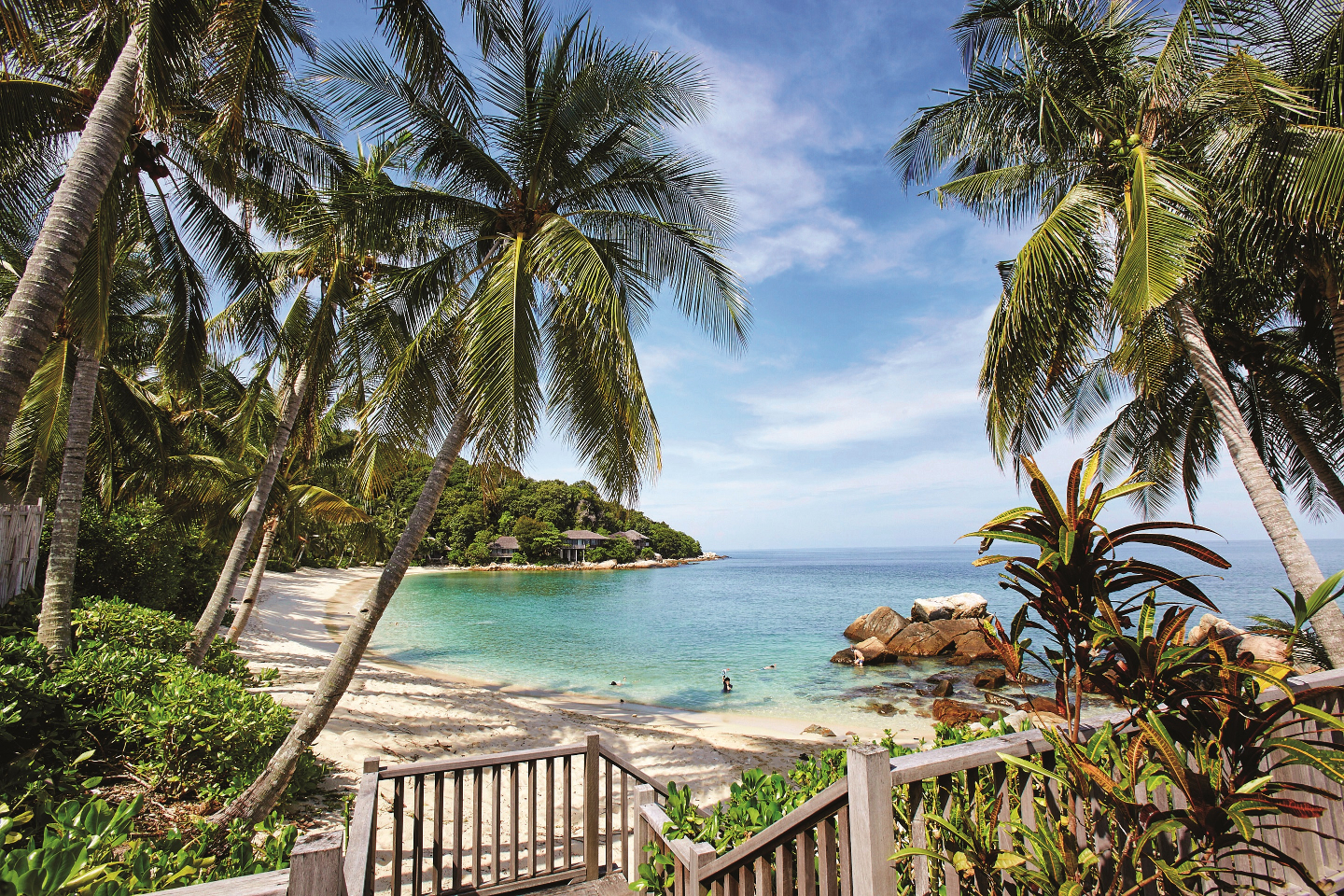
Batu Batu Resort combines luxury with conservation (Photo: SooPhye)
Malaysians have been happily rediscovering the beauty of their country ever since the Movement Control Order was relaxed, segueing into the recovery phase. With interstate travel allowed once more, those suffering from cabin fever have been making hastily arranged road trips all over the country.
Batu Batu, a bijou resort in Pulau Tengah, in particular, has been attracting well-heeled travellers who want a taste of relaxed luxury as well as pristine waters. Located just 16km (or a 20-minute speedboat ride) from the fishing town of Mersing in Johor, the resort sits in the middle of a cluster of seven islands in the protected waters of the Johor Marine Park. There are just 22 villas on the whole island, which measures 3km in circumference. Of these, only 15 are presently open to ensure an intimate and safe environment.
Surrounding Batu Batu is the South China Sea, which changes hues according to the hours of the day, starting with a deep jade in the morning to aquamarine and cobalt as the day goes on. And while spending all day on a sun lounger with a tiki cocktail in hand is well and good, it would be remiss of the clued-in and environmentally aware modern traveller to ignore the good work the resort is doing with Tengah Island Conservation (TIC).
as1a6660a_1.jpg
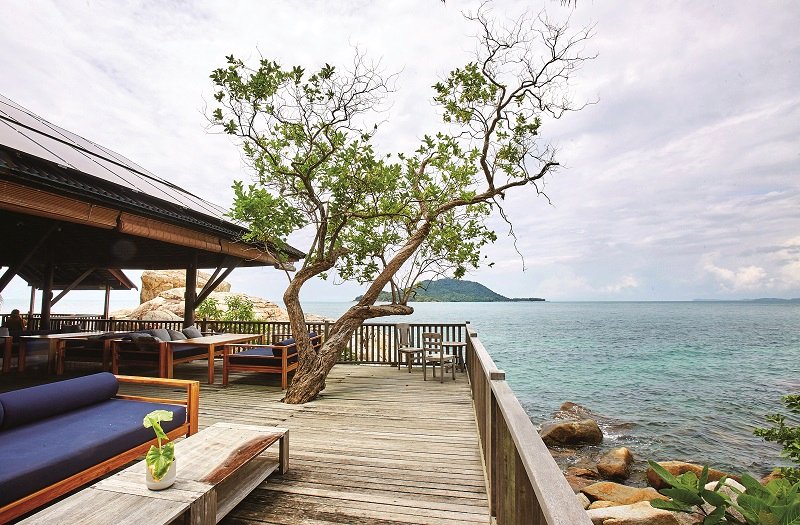
Since it opened in 2012, the resort has undertaken a series of ecological and conservation projects that encompass the flora and fauna of the island, including its birdlife and, of course, its marine life. Visitors to Batu Batu are immediately informed of its excellent work with turtles in particular, executed in collaboration with the Department of Fisheries Johor. This is only natural as the beaches surrounding Pulau Tengah are favoured by green and hawksbill turtles, penyu agar and penyu kara respectively in Malay, that come ashore to lay their eggs between March and October. Long Beach, a short stroll from the reception area and where the dive centre is located, is also home to TIC’s turtle nest protection site and hatchery.
Batu Batu’s turtle protection initiatives can be traced back to when the resort was first set up eight years ago, starting with the Turtle Watch Camp, a volunteer project established not long after to support the resort’s sea turtle hatchery. This has since evolved to become TIC, which was granted non-governmental organisation (NGO) status last September. Batu Batu, as TIC’s founder, continues to partially fund its research and conservation work. TIC has five full-time staff and works with interns from abroad as well as local universities.
Today, TIC is run by programme director and conservation biologist Tanya Leibrick and assisted by the very affable outreach coordinator Mohd Alzam Mohd Affandy, a young and enthusiastic scientist and marine biology graduate from University Malaysia Sabah. “I’ve been here 2½ years,” Leibrick says. “It was the right time for TIC to attain independent status as there is a definite need to have a larger reach. Our projects were growing beyond what the resort could support on its own. It is easier to work with all the different organisations as well as tourism operators and government departments if we were an independent NGO.”
as1a6786a_1.jpg
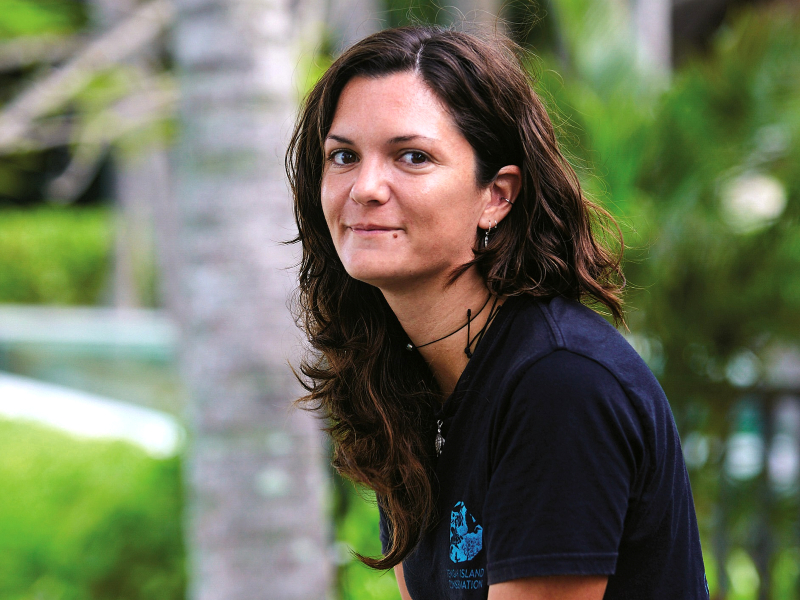
Guests are welcome to stop by the TIC office at Long Beach to speak to its team members on anything pertaining to marine conservation and ecology. Talks are organised almost daily and span a wide range of interesting subjects, although Leibrick acknowledges that “the turtle talks are by far the most well-received. We really love it when guests come and chat with us. It is important, as tourists and visitors, to find out what’s going on in your area or resort in terms of conservation work”.
The TIC team also organises weekly beach clean-ups with guests. “It’s great as a family activity and especially for the younger generation to see the impact of trash on the planet as it really gets them thinking about recycling or if you need to even use something in the first place,” she says.
On another note, every morning, right after sunrise, the team goes on a turtle patrol, travelling by speedboat around the neighbouring islands, in search of turtle landing and nesting tracks. Although the ideal scenario would be to leave the nests in situ and undisturbed, the ongoing theft and predation of turtle eggs have necessitated search and rescue missions. The clutches of rescued eggs are then safeguarded to allow for incubation before being hatched and released, all following strict handling protocols.
as1a6556a_1.jpg
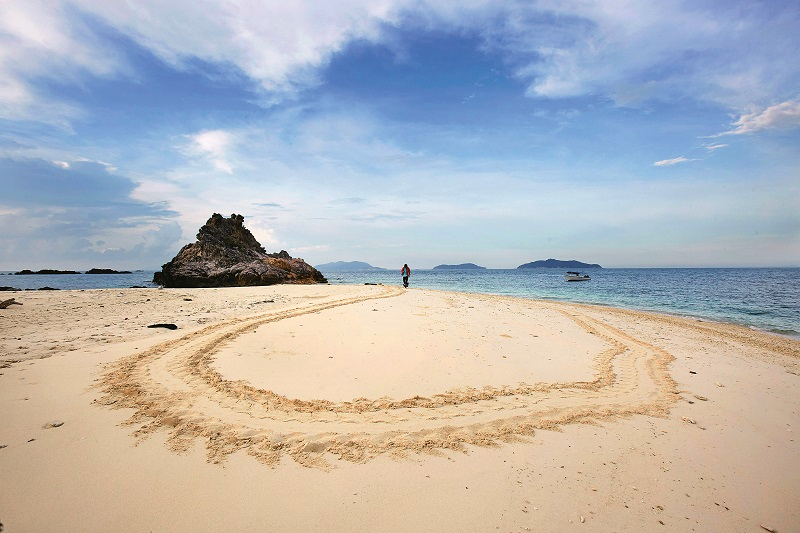
“People are really struggling as tourism has been dealt a hard blow,” Leibrick acknowledges, “but, as a short-term solution, we want to work with licensed egg collectors in order to save whatever clutches that are found. It’s not the most ideal solution but we need to act right now in order to ensure the turtles have a fighting chance. The long-term goal, however, would be to work with the locals; we need to continue educating. We already do a lot of marine conservation talks in the neighbourhood schools and it is heartening to see the kids so responsive. We hope this then ripples out to the community”.
The TIC scientists also collect data on the turtles and share the information with government agencies as well as other turtle conservation NGOs and academic institutions. As the turtle survival rate is alarming low — it is estimated that only one in 1,000 baby turtles lives to reach adulthood — it is hoped that effective turtle hatchery management, such as the one at Batu Batu, will help increase the number of hatchlings. If the TIC team encounters nesting female turtles, it will also tag them in order to study their migratory routes.
As all of the resort’s dive and nature activity profits are channelled back to TIC’s conservation efforts, it makes perfect sense to spend your days at Batu Batu engaging in diversions that support the ecology while having a good time. There are no less than 15 world-class dive sites at and around Tengah Island. The surrounding reefs are healthy and thriving, and home to an artist’s palette of reef fish, including clown fish, butterfly fish, parrotfish, stingray and playful baby black tip reef sharks. Snorkelling trips to the reefs of nearby Pulau Hujong and Pulau Besar can also be arranged.
83830841_3358380344233450_8898904192698023936_o.jpg
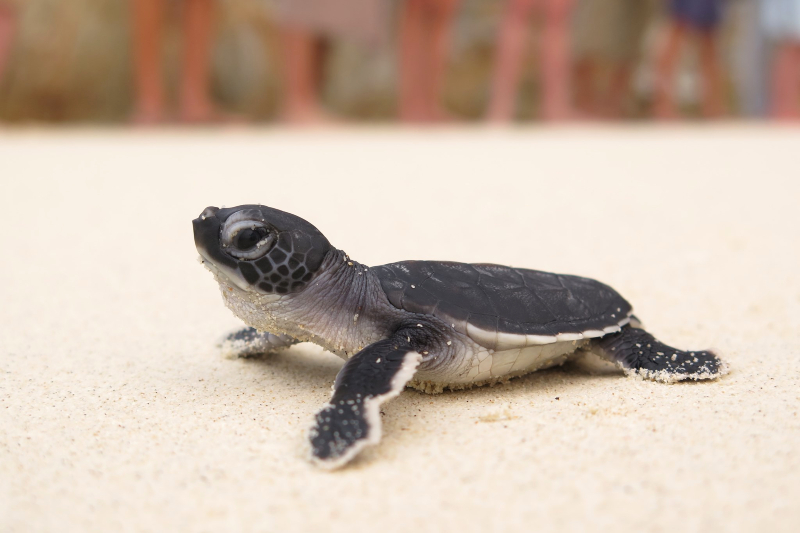
Those who cannot quite find their sea legs can explore the Eastern or Western hiking trails around Batu Batu instead. Trek through tropical forest and sandy beaches, learning about the island’s flora and fauna as well as a brief spell in its history as a refugee camp for Vietnamese boat people. If you are lucky, you might spot land crabs, white-bellied sea eagles or monitor lizards. And while hiking can be hot and thirsty work, you will be rewarded with several stops at breathtaking viewpoints overlooking the nearby islands and the stunning South China Sea.
As with all things in life, there is a need for balance. Finding the sweet spot between promotion and protection requires a framework that takes competency, shared values and engagement into account. After all, as the great anthropologist Jane Goodall once said: “Only if we understand can we care. Only if we care will we help. Only if we help shall they be saved.” Perhaps we should all take the first step towards better understanding the marine plight in a perfectly enjoyable way: by ensconcing ourselves in Batu Batu for a good few days.
To learn more about Batu Batu and/or support its conservation efforts, visit batubatu.com.my or tengahislandconservation.org.
This article first appeared on July 20, 2020 in The Edge Malaysia.


